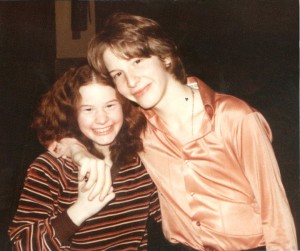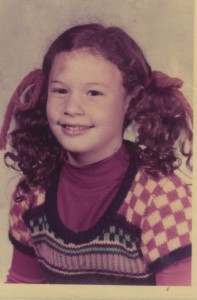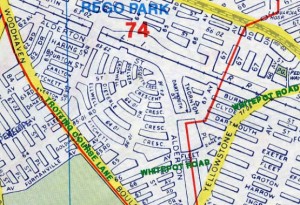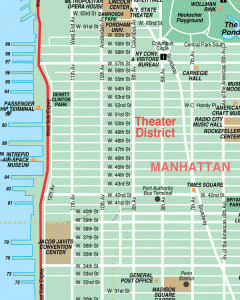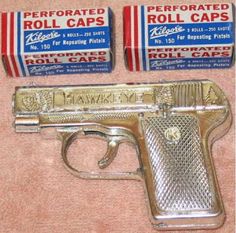 Before there was 24/7 television programming and portable gaming devices, kids had to find other ways to pass the time when they got bored with annoying their siblings or parents. Some of the toys we had were timeless classics, still enjoyed by children today, some were idiotic fads, and others were downright dangerous. Here are a few of my favorites.
Before there was 24/7 television programming and portable gaming devices, kids had to find other ways to pass the time when they got bored with annoying their siblings or parents. Some of the toys we had were timeless classics, still enjoyed by children today, some were idiotic fads, and others were downright dangerous. Here are a few of my favorites.
Lite Brite. My mother was game for letting us do art in the house as long as none of the materials had the potential for mess-making. This is why I got a cheap paint set for Christmas and only had an eight-pack of crayons. She found the perfect solution to fueling our creative juices when she purchased Lite Brite, a light box with small colored plastic pegs that fit into holes to create a lit picture. All you had to do was put your peg in the spot designated, making sure you used the right color. Otherwise you would end up with a picture that was different, displayed some degree of originality, and didn’t match the picture on the box, meaning you were a rule breaker and not a follower and you might be a big problem for society later on. I bet Jackson Pollack never had a Lite Brite set.
Monopoly. I played so much Monopoly as a kid, that requests from my kids to play it now are usually met with a response such as “Are you sure you want to make that big a commitment?” and “On a school night?” During summer vacations, after spending a full morning at the pool club, Cha-Cha and I would go to her house for a 2 to 3 hour game of monopoly before returning to the pool. She always won and one day in a fit of rage, I threw Boardwalk out the window. This is when i reached my saturation point and the game has never had the same appeal to me since.
Clackers. Clackers were two heavy plastic balls suspended by string which were swung up and down so when they banged each other they made a clacking noise. Clackers banged into more than each other. They sometimes smacked kids in the face, teeth, noses, and cheek bones. Sometimes the string would break and the Clacker would go flying and shatter. I’m sure at least one or two boys took a Clacker to the balls as well, although I haven’t heard of any incidents being officially reported (like, who would want to admit that!)
Don’t Spill the Beans. In this game, players took turns tossing plastic beans into a tipping pot. The object was to get all your beans into the pot without tipping them over. The game was about as interesting as watching paint dry until the pot was very full and you secretly hoped that your competitor would just throw in the damn bean that would bring that pot to its knees. With this game, came the beginnings of my understanding of the concept of schadenfreude, deriving pleasure from the misfortune of others.
Twister. Twister was a game with a large plastic mat with colored circles. You would spin a dial that would tell you what colored spot to place your hand or foot on and no two people could place a hand or foot on the same circle. This caused players to end up in some twisted contorted positions. The goal of the game was to be able to stay in these positions without falling. At least that’s what the rules said. I think the goal of the game was to end up in a position that was the closest thing to foreplay you would know for a good six years.
Gilbert Chemistry Set. When my brother Jeffrey was about eight years old he got a chemistry set. Mom always seemed a bit uneasy with this, but I think she saw it as some sort of rite of passage. When the dining room table was covered with newspaper, we knew the mad scientist was at work.Watching my mother oversee his experiments was a painful as watching her oversee our menorah during Hanukkah, and with good reason. Apparently, the kit included potassium permanganate, which besides being poisonous has been known to make things catch fire. Oh, and the kit contained ammonium nitrate, a chemical that is used to make homemade bombs.
Easy Bake Oven. For the girls of my generation, this was the quintessential toy of the 70’s, on par with the Cabbage Patch dolls of the 80’s and Tickle Me Elmo in the 90’s. I never had an easy bake oven because my mom thought they were dangerous. My brother was given cart blanche on making a bomb, but I wasn’t allowed to make a brownie using a light bulb.
Mystery Date. This was a wonderful board game for young girls, that helped erase all that Betty Friedan and Gloria Steinem had achieved for women’s lib. In this game, players try to select cards to create a matching outfit which must then match the outfit of the date behind the mystery door. Possible dates included the formal dance date, the bowling date, the beach date, and the skiing date. The date to be avoided was the dud, a guy with a disheveled appearance and a five-o-clock shadow. In my opinion, the dud was the hottest of the bunch and bowling guy was the real loser, which is why I got bored with this game after about a year and later went on to find my own dud. Note to any former duds (I mean boyfriends) who may be reading this: this is not about you, ok?
Snow Cone Machine. Throw in some ice, crank the handle, and pour a syrup over the top that tastes like melted Luden’s cough drops (for about two slurps when it then tastes like ice that was melted and refrozen multiple times). Hell, yeah; Mmmm; I’m in.
Super Elastic Bubble Plastic. The set came with a tube of some sort of super smelly plastic goo and a thin straw. The goo was placed on the end of the straw and you could create a ball with psychedelic colors by blowing into the straw. The fumes from this stuff were also psychedelic in another sort of way and you could get buzzed off of them. Users were warned to never inhale through the straw, but we all know what happens when kids are told what NOT to do. And besides, by the time super elastic bubble plastic was in, mimeograph ink was out…you can see where I’m going with this.
Tea Set. I had a Raggedy Ann and Andy tea set and was given strict orders from mom that it was just pretend and real liquid or food should never touch these precious plastic plates. She tried to draw me into her world of dysfunctional household items, but I rebelled and when she went out shopping, I convinced my father to have tea parties with me with my tea set, peanut butter and jelly on crackers, and grape juice. My mother still doesn’t know about this, so please, let’s keep it between you and me.
Cap Guns and BB Guns. Cap guns created a loud sound and a puff of smoke simulating a gunshot when the trigger was pulled. Small disks of explosive compounds provided the noise and smoke. (oh, what a relief; I thought maybe they contained something dangerous). BB Guns actually shot pellets that stung like hell when they hit you. Mom didn’t allow us to have these. Instead, she preferred that we go unarmed through the mean city streets of Queens while the resident bad boys of Saxon Hall shot at us…usually while smoking candy cigarettes.
Pong. Pong was the very first video game that was made available for home use. I was already a teenager by the time I first played this. My friend Susan was the first kid I knew to have Pong and I quickly became addicted to it. The game was an electronic version of table tennis. In retrospect, it required about as much hand-eye coordination as hitting a beach ball traveling at one mile per hour with an oversized tennis racket, but at the time, it seemed really challenging.
Cardboard Boxes. We had some great toys, but sometimes the best toy in the house was the cardboard box lying around after a delivery of groceries or some new bedding. We spent endless hours making forts, using the box as a vehicle without wheels, and climbing in and out of it. Boxes allowed us to be imaginative (unlike Lite Brite) and just enjoy something simple. I once got a huge cut on my elbow from playing in a cardboard box. It never healed properly and I have a scar from it to this day.It’s a great reminder of a fun- filled era of games and toys and lasting memories with friends and family.
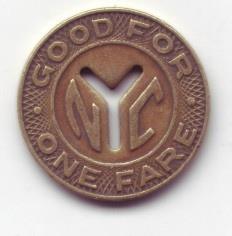 I’d be in big trouble if it weren’t for the NYC Mass Transit Authority. And while it’s not always perfect, it gets the job done. Most of my commuting over several decades has been within Manhattan and Queens with less frequent trips to the Bronx and Brooklyn, but after taking thousands of subway rides I feel the subway system is due some love from me so here goes.
I’d be in big trouble if it weren’t for the NYC Mass Transit Authority. And while it’s not always perfect, it gets the job done. Most of my commuting over several decades has been within Manhattan and Queens with less frequent trips to the Bronx and Brooklyn, but after taking thousands of subway rides I feel the subway system is due some love from me so here goes.

![tights.3[10]](http://59streetbridge.com/wp-content/uploads/tights.310-300x180.jpg)

